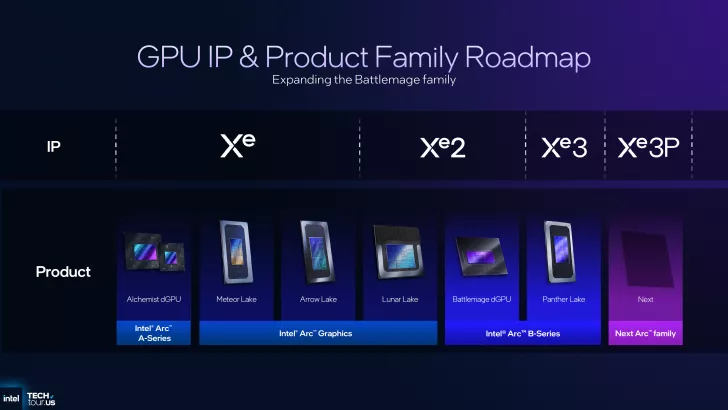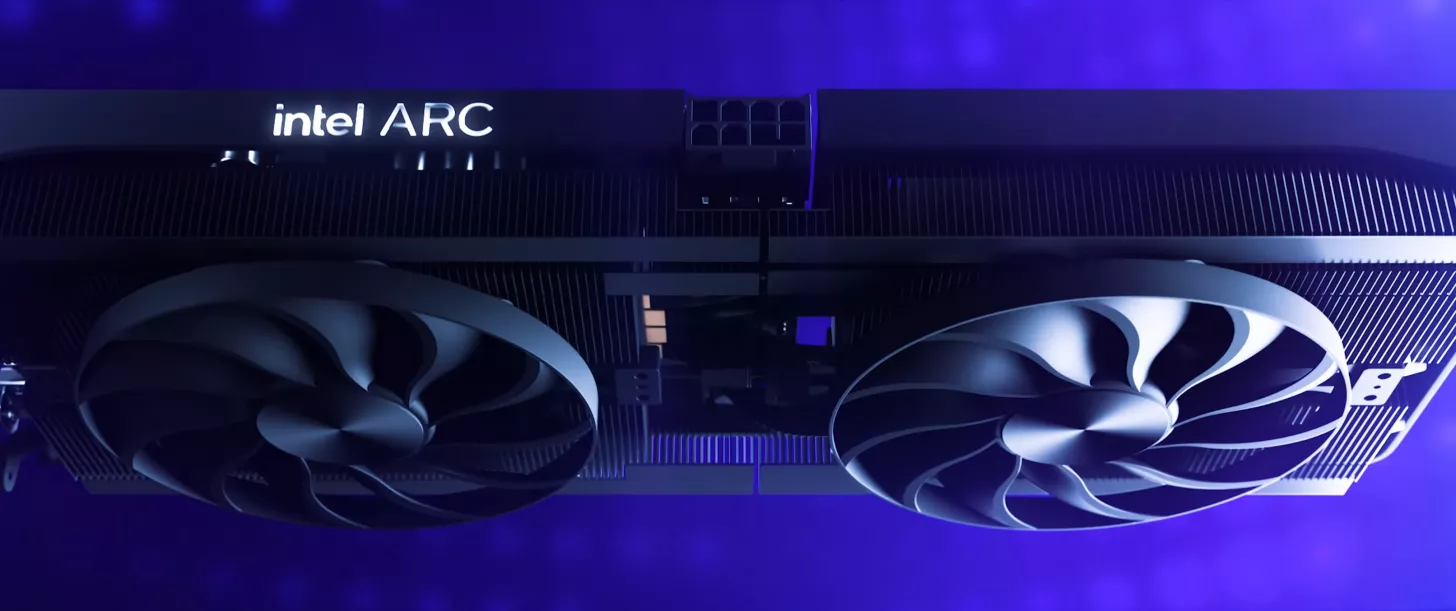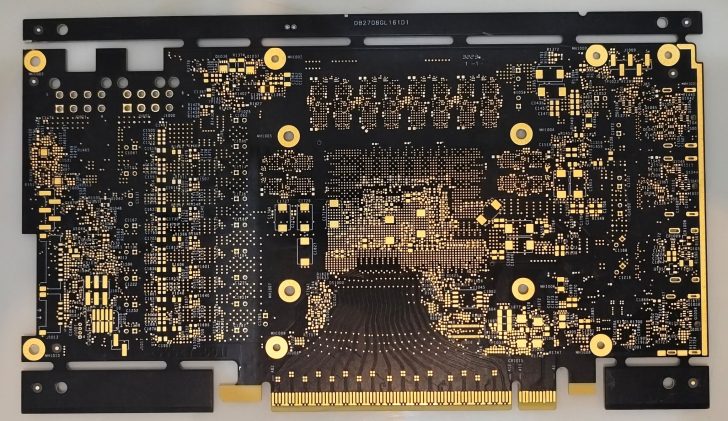Intel’s ambitions for its Battlemage GPU lineup were once grand, featuring larger dies, innovative 3D stacked cache solutions, and high-performance SoCs. However, these plans were shelved due to financial challenges and shifts in company leadership.
Unveiling Intel’s Battlemage Vision
Intel’s Arc GPUs, initially codenamed Alchemist, didn’t receive the anticipated reception, but improved driver support revitalized its prospects. The next-generation Arc series, known as Battlemage, promised to push boundaries. Although many of these plans are now only visible through prototypes or insider leaks, they paint a picture of what could have been.
An X user, @GOKForFree, shared intriguing prototypes of an unidentified Intel Arc graphics card, revealing a glimpse into Intel’s past strategy. These images, dated May 2025, hinted at a board designed for a larger GPU die than the Battlemage BMG-G21 found in retail Arc B580 and B570 cards. The presence of six GDDR6 memory sites suggested a 192-bit bus, and the board featured dual 8-pin connectors, indicating a higher-end VRM than typical Arc B-series cards.
This PCB was likely intended for the high-end Intel Battlemage BMG-G10 die, featuring a BGA 2727 design. Reports indicate two configurations: the BMG-G10 X3 with 28 Xe cores and the BMG-G10 X4 with 40 Xe cores. In contrast, the Intel Arc B580 peaks at 20 Xe cores.
The prototype’s BGA setup suggests this PCB was meant for a more advanced GPU than the BMG-G21, as its layout differs significantly. Additionally, the shelved Arc Battlemage design included the Adamantine cache, a 3D stacked architecture with a 512 MB base cache tile, mirroring the design seen in Clearwater Forest chips. This advanced cache system and the premium Battlemage graphics tile were also planned for Arrow Lake Halo SoCs, which were also canceled.
The Intel Arc Battlemage cards were expected to continue using a 192-bit bus interface but could have doubled the memory capacity to 24 GB and achieved faster pin speeds for better bandwidth. The cards were also configured for PCIe Gen5, indicating Intel’s intention to explore a new direction before reevaluating its strategy.

Despite these setbacks, Intel’s Arc division continues to thrive, especially in software development with impressive driver updates. At Tech Tour 2025, Intel unveiled XeSS 3 MFG, alongside other innovations. Sources suggest Intel is developing a high-end Battlemage GPU, the Arc B770, while the Nova Lake series will introduce Xe3P GPUs, setting the stage for Intel’s upcoming graphics announcements.
Intel ARC Gaming GPU Lineup
| GPU Family | Intel Xe | Intel Xe+ | Intel Xe2 | Intel Xe3 | Intel Xe3P | Intel Xe Next | Intel Xe Next Next |
|---|---|---|---|---|---|---|---|
| dGPU Products | ARC Alchemist GPUs | N/A | ARC Battlemage GPUs | ARC Battlemage GPUs? | Arc Celestial GPUs? | ARC Druid GPUs | ARC E*** GPUs |
| iGPU Products | Arc Graphics | Arc 100-Series | Arc 200-Series | Arc B-Series | Arc C-Series? | TBA | TBA |
| GPU Segment | Mainstream Gaming (Discrete) | Mainstream Gaming (Discrete) | Mainstream / High-End Gaming (Discrete) | TBC | TBC | Mainstream / High-End Gaming (Discrete) | Mainstream / High-End Gaming (Discrete) |
| GPU Gen | Gen 12 | Gen 12 | Gen 13? | Gen 14? | Gen 15? | Gen 16? | Gen 17? |
| CPU iGPU | Xe-LPG (Meteor Lake) | Xe-LPG+ (Arrow Lake) | Xe2-LPG (Lunar Lake) | Xe3-LPG (Panther Lake) | Xe3P-LPG (Nova Lake) | TBA | TBA |
| Process Node | TSMC 6nm | TSMC 6nm | TSMC 5nm (3nm Lunar Lake Tile) | TSMC 3nm / Intel 3 | TBA | TBA | TBA |
| Max Xe Cores | 32 | 8 | 32? | 8 | TBA | TBA | TBA |
| Memory Subsystem | G6/LP5 | G6/LP5X | G6/LP5X | G6/LP5X | TBA | TBA | TBA |
| Launch | 2022 | 2024 | 2024 | 2025 | 2026 | 2027? | 2028? |


